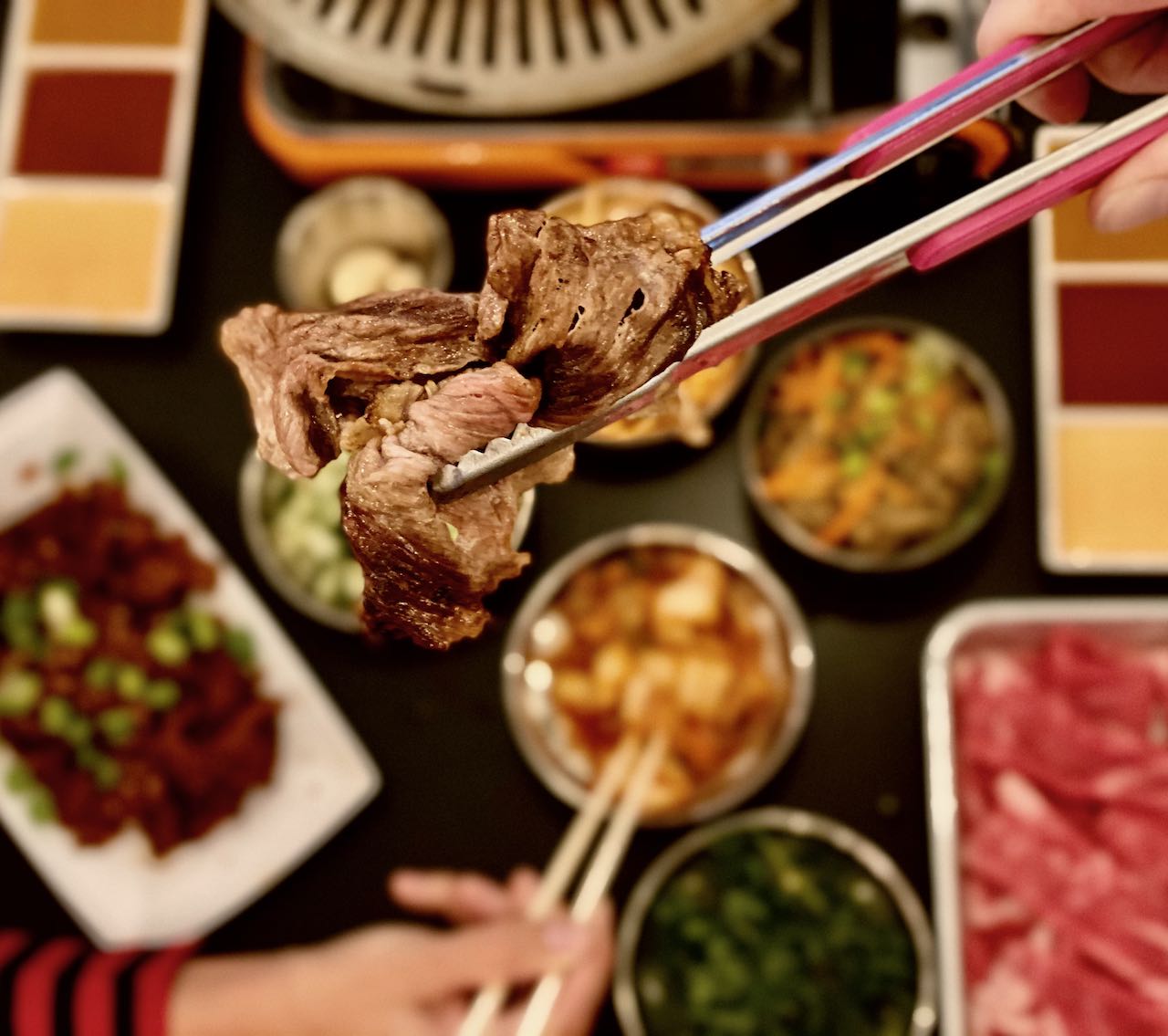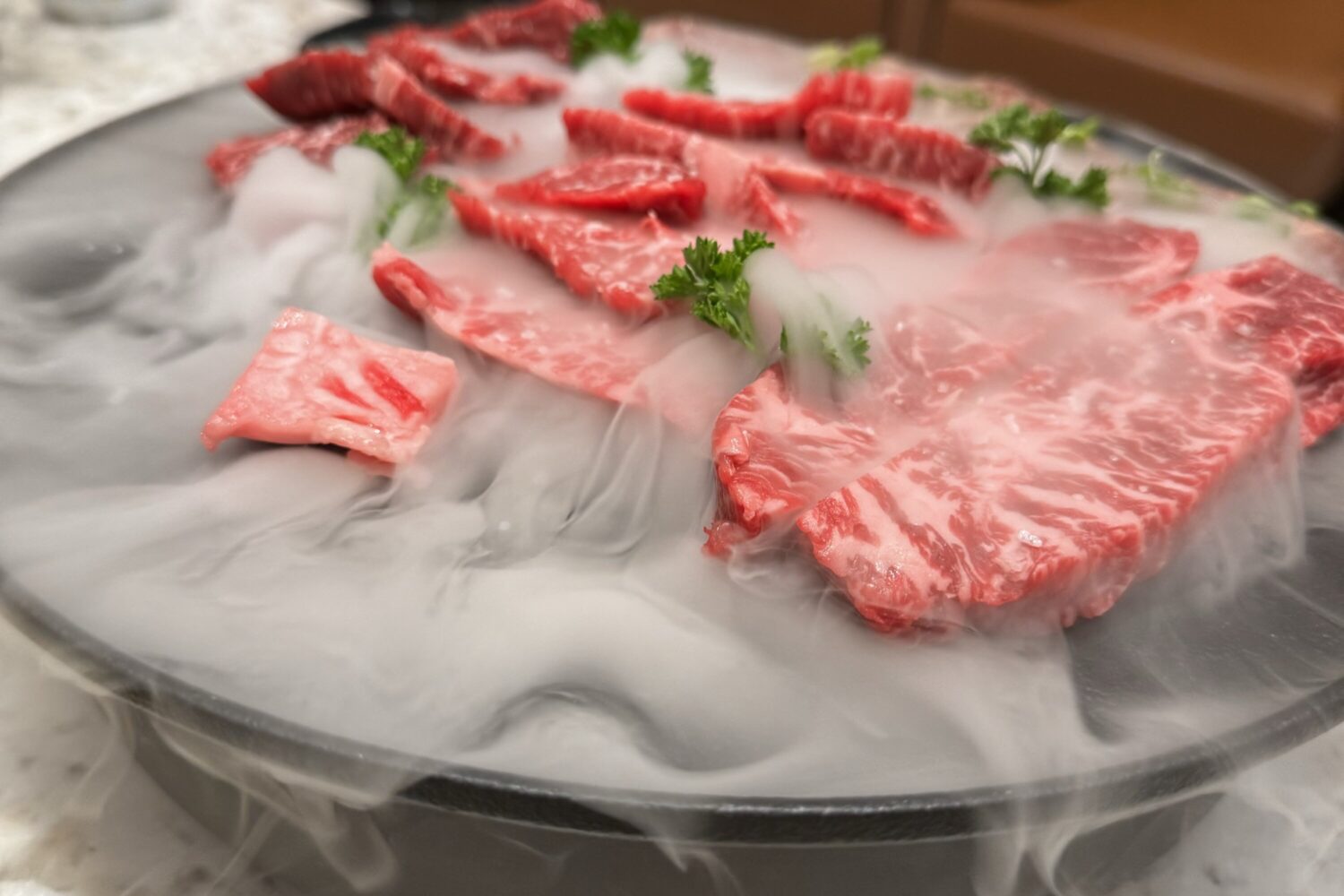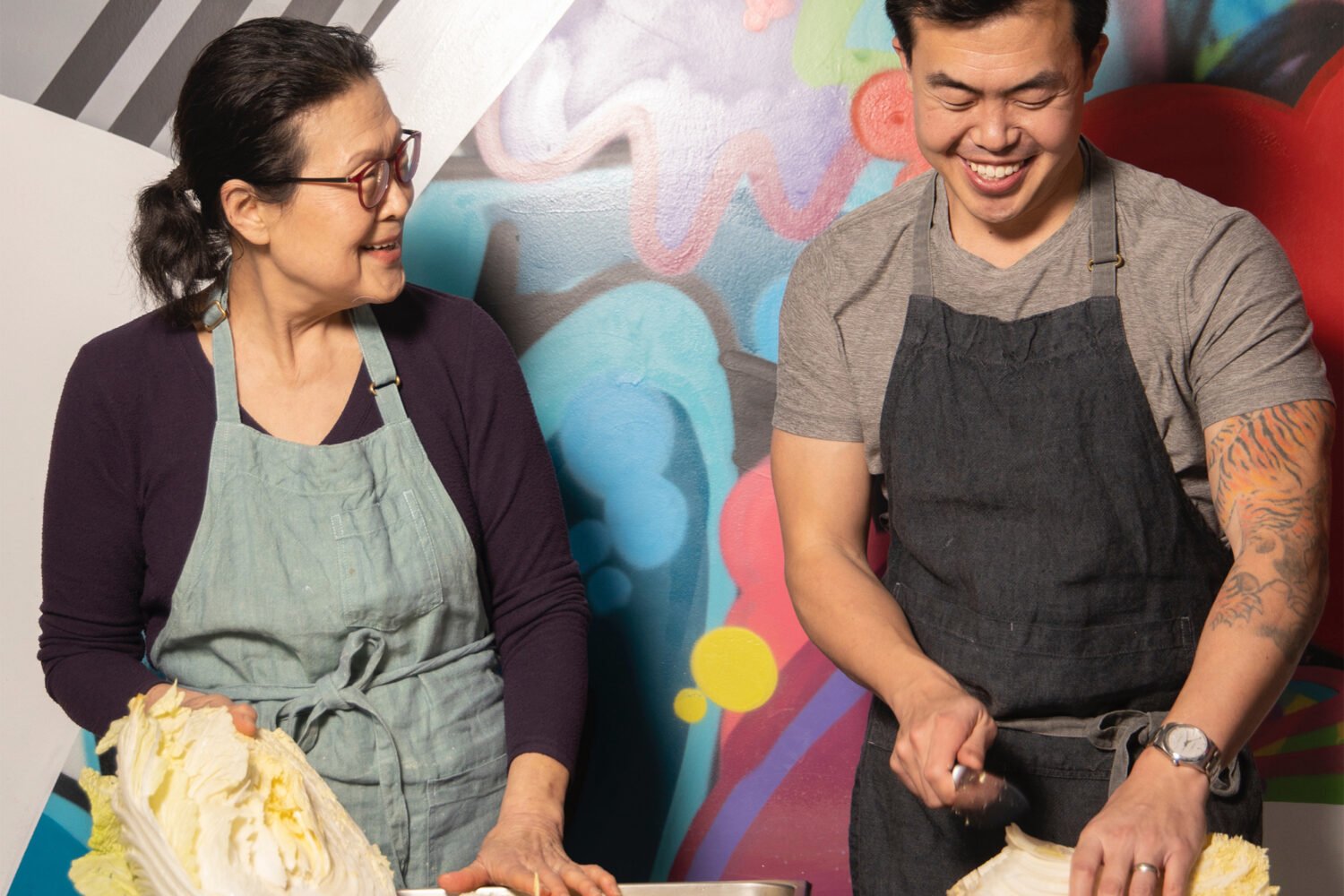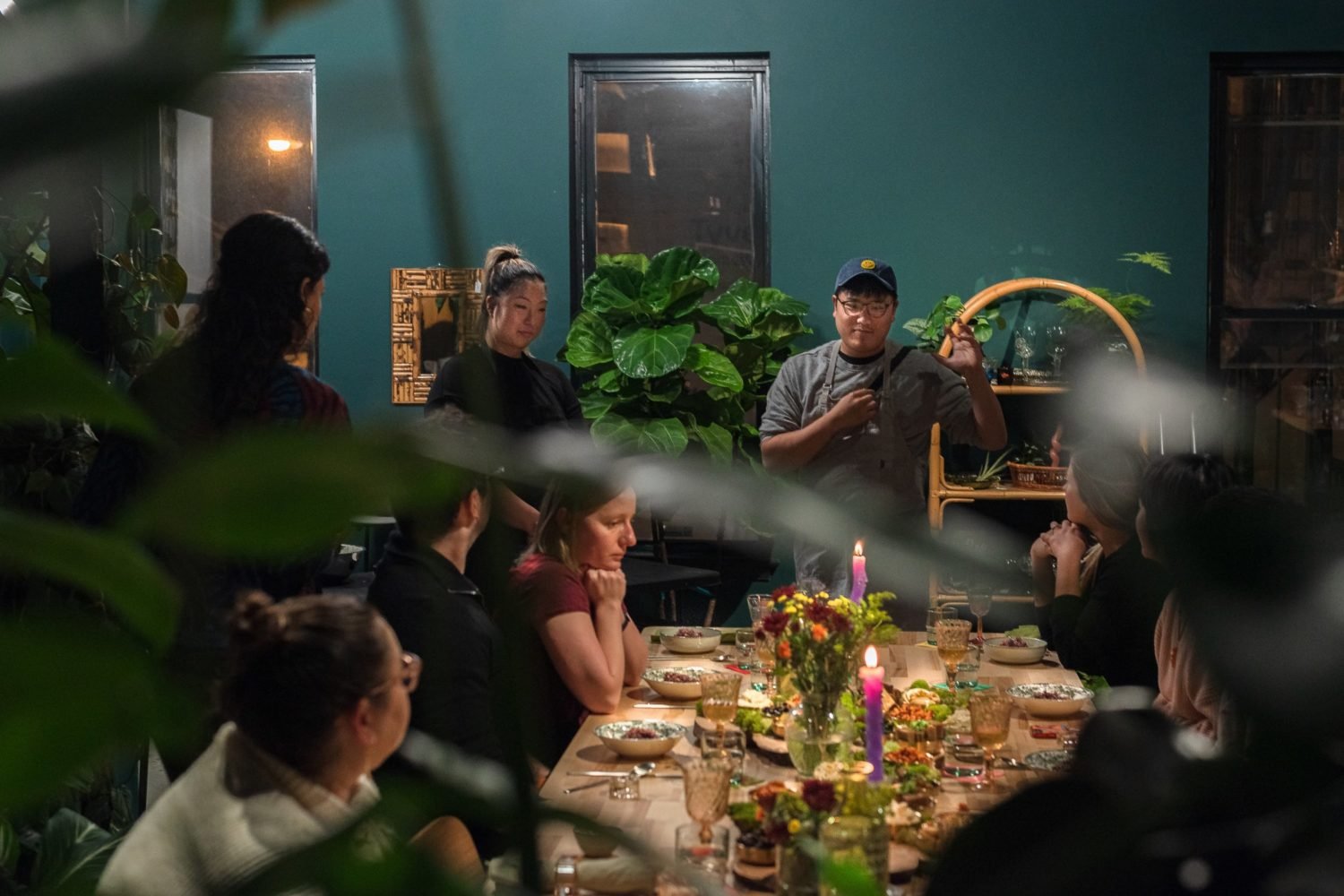While sit-down restaurants have pivoted to carryout during the pandemic, one fast-casual joint has made the opposite move. Korean comfort food spot Seoulspice, which is known for its customizable bibimbap bowls and kimbap “burritos,” has converted its Tenleytown and NoMa locations into Korean barbecue restaurants. (The College Park outpost will operate with its normal menu for now.)
“We haven’t had to layoff any of our employees. We haven’t had to reduce any hours, and we want to keep that trend up, so we’re always looking for new ideas to keep them working,” says owner Eric Shin, who also turned his restaurants into bodegas at the start of the pandemic.
In addition to the fast-casual menu, which is still available to-go, Seoulspice is offering dine-in with all-you-can-eat prime marbled beef brisket, banchan, rice, and sauces prepared from portable tabletop grills. Shin says he wanted to limit the menu so he could offer higher quality meat at a more affordable price. And affordable it is: The meal is discounted to $15 per person throughout November and $17.50 for December. The full price menu will begin in January at $20 per person.
Additional meats including bulgogi, marinated chicken, and thinly sliced spicy pork, are available for up to $7.99 extra, along with add-ons such as tofu, japchae noodles, and purple rice. The restaurant makes its own sauces and banchan in house, including kimchi, lightly pickled radish with gochugaru flakes, and kale with sesame marinade.
Reservations (available from 5 to 9 PM) are required, and the restaurants are limiting meals to one hour. To expedite service, food begins to land on the table as soon as diners sit down.
Shin had initially looked into setting up outdoor igloo seating, but worried about the lack of airflow, and ultimately felt indoor dining would actually be safer with the right precautions. Each restaurant will only allow two parties of no more than five people to dine at once, leaving a good 10 feet or more of social distance. The restaurants are also rotating tables, so each one will be “OCD cleaned” and sit for an hour between guests. To further limit exposure, diners pre-pay and scan a QR code to request and purchase additional meats, banchan, or drinks. Each table is also outfitted with its own individual HEPA medical-grade particle filter with UV light “scrubbing.”
“I go to One Medical, and a lot of the doctor’s offices are starting to put these smaller particle units in their lobbies. I just notice when you go in there, people congregate near those units. They just feel safer,” Shin says.















